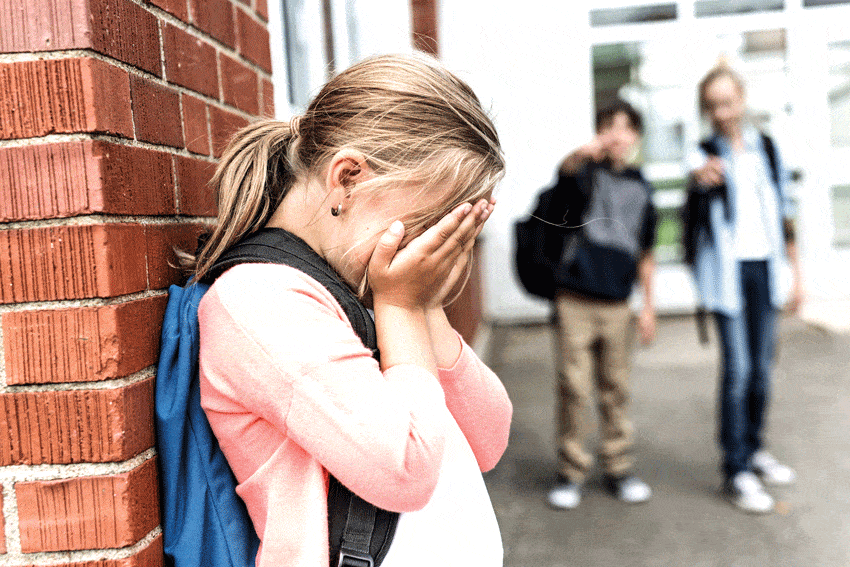
Reality of bullying at odds with claims of gender activists
Would it surprise you if I said that religious discrimination is a bigger problem amongst our teens than discrimination on the basis of sexual orientation or sexual identity?
Given that there are whole university departments dedicated to the development of programs like Safe Schools which are marketed as reducing bullying of students on the basis of sexual orientation or gender identity, and an increasing push for even preschoolers to be educated in the ways of gender fluidity, one would be forgiven for believing that this is the most significant problem when it comes to bullying in Australian schools.
It’s not. It’s actually not in the top five according to a recent report released by the federal government. Since 2004, the Australian Government has been conducting a study titled Growing Up in Australia.
Those pushing to crowd the curriculum with Safe Schools [and] Respectful Relationships…need to explain why, in light of these findings, their focus is so narrow.
At the commencement of the study, 10,000 families of babies and toddlers were invited to participate in a program that would follow the children into their young adulthood. In addition to answering a comprehensive questionnaire every six months, participants would allow access to things like Medicare records and NAPLAN results so that a more fulsome understanding of what factors influence learning and cognitive development, social and emotional functioning, health and physical wellbeing can be obtained.
The data is then used to inform social policy and early intervention strategies in areas like childcare, education, parenting and family relationships and the like. For example, one of the findings was that children who go to bed before 8.30pm are likely to be healthier than children who are up late. Another finding was that those who spend more time doing household chores, reading and homework were less likely to have behavioural problems than those who spent more time watching TV or playing computer games.
On the one hand, these findings seem like common sense, but they can be used to formulate educational programs for parents for raising their children. Another interesting – and heartbreaking – finding was that a third of Australian children wished they had more quality time with their fathers.

When child participants were younger, their parents obviously answered questions on their behalf but as they got older, they began to answer questions about their own experiences.
From age 12, children began to be asked about romantic relationships, drugs and alcohol use, bullying and discrimination. These questions have now been asked over a period of five years, with the first results on the experiences of discrimination amongst Australian teenagers were released last week.
The questions yielded some interesting findings. The study has found that almost a third of Australian teenagers experience discrimination. By far, the most common form of discrimination relates to physical appearance, with one in five Australian teens being bullied or discriminated against because of the way they look. This type of bullying, often sustained over a long period of time, is unsurprisingly linked to high rates of depression and anxiety, as well as self-harm.
The next most prevalent were racial and sex-based discrimination, with about 9 per cent of students reporting discrimination in these areas. Then there was religious discrimination, with 5 per cent, or 1 in 20 students, reporting bullying or discrimination based on their religious beliefs.
The next most prevalent form of discrimination was based on mental health, then sexual orientation or sexual identity, and then disability. All forms of discrimination and bullying are bad. All of them need to be stamped out of our schools, so that children can focus on learning and building good friendships, and on discovering who they are themselves rather than having it dictated to them by their peers. Unfortunately, it seems that in recent years, there has been a greater focus on discrimination on the grounds of sexual orientation and gender identity to the detriment of other forms of bullying and discrimination, most of which are more prevalent amongst teens.
Those pushing to crowd the school curriculum with Safe Schools, Respectful Relationships or other forms of ‘anti-bullying’ education need to explain why, in light of these findings, their focus should be so narrow.
It’s probably also worth noting that while most forms of discrimination named in this report are currently illegal in New South Wales, it is still perfectly legal to discriminate against children (and adults) on the basis of religious belief or activity.
A joint NSW parliamentary committee has handed down a report recommending changes be made to our anti-discrimination laws to include protections against religious discrimination. If they lacked the motivation to make these changes before, perhaps – for the sake of the 5 per cent of Australian students who experience religious discrimination – our MPs will be encouraged to offer bipartisan support to a bill that will finally redress this gap.
Related:
